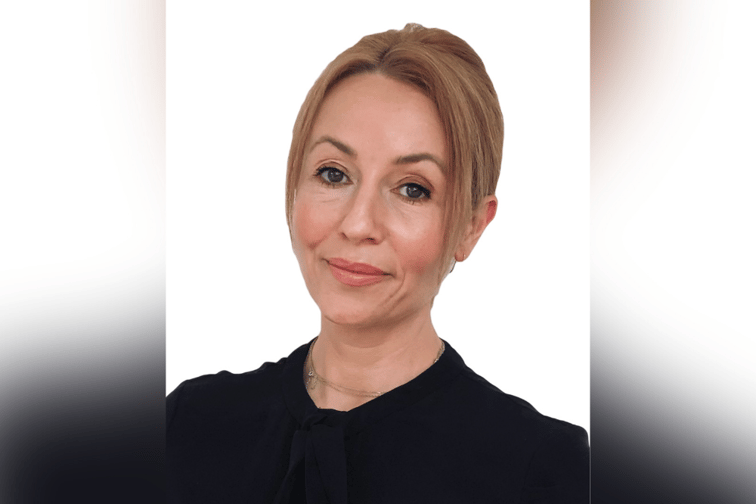

Surely few insurance professionals can lay claim to understanding the complexities that accompany returning to work after time out of the sector quite as implicitly as Katie Small (pictured), head of private clients for the independent specialty insurance broker Miller. After all, when Miller’s special risks co-head James Hands approached her about the role and persuaded her to hang up her retirement intentions, she had already been out of the market since 2017.
Small’s experience spotlights a topic that all too rarely receives the contemplation it deserves – the talent gap for women over 40. And it’s not an insurance-specific issue, she said, but rather one that resonates across many industries. Women tend to fall out of the workplace usually at childbearing and childrearing ages, she said, something that is precipitated by a variety of factors – some social, some economic and some biological.
“From my own journey, and I can really only speak for myself and my own observations, the world hasn’t changed that much,” she said. “Yes, we have different opportunities as women now and there’s not the same stigma attached to working mothers that there was for my own parents’ generation.
“But it hasn’t changed that much when it comes to responsibilities for childcare and household chores. That’s not just other people expecting us to do it either, we also take it on ourselves. But either way, in the majority of cases, it still falls on the women to do this when they have a baby or are pregnant.”
The real consideration, she noted, is not the short-term decision made by a mother to stay at home with their child(ren) but rather what happens in the longer term. After a few years of not working, it’s easy for people to lose confidence in themselves and feel they’ve lost their relevance or the skills required to thrive at work. In those cases, women will be put off from applying for roles out of fear of rejection, or fear of failing if they do return to work.
“There’s also the financial barrier in that you have to earn really quite a significant amount of money in order to be able to pay for childcare,” she said. “It is a significant challenge that we still have to pay for childcare from our net income...and that’s if you can find somewhere to look after your child that works around your working hours.”
There are a lot of factors stacked against women considering a return to the workforce, she said, and, as a result, the insurance sector is leaking knowledgeable, skilled and motivated talent. Therefore, the responsibility is on industries, business communities and government alike to provide accessible and proactive solutions.
“Taking myself as an example, I was in a very senior position [when I retired],” Small said. “I had sat on the board at R K Harrison but I left the market entirely before I was encouraged to come back. And I’m sure there are lots of people out there like me that are potentially available but aren’t so obvious.
“The problems around attracting and retaining women over 40 are getting better but [the situation’s] not going to change overnight. We’re going to have to carry on doing things to support women, to encourage them to come back to work. More attention needs to be paid to the childcare challenge and encouraging women, not just at the very low end of the pay scale, but also the mid- to higher tier earners.”
The time is right for the industry to leverage ongoing conversations around the future of work post-COVID, and source or invest in new initiatives to drive progress forward. There are a lot of schools of thought around how to proceed, Small said, but from her perspective the answer is to blend empowering the women at the heart of this topic with promoting change across government and industry alike.
“If I had a wishlist, it would be like this – firstly, empowering women with real-life examples and helping them understand that the choice they make for the benefit of their family are not choices they have to stay with forever, that flexibility and evolution are absolutely fine and people aren’t going to question if they’re the right person for the job,” she said.
“[…] Secondly, we need to measure progress, and encourage corporate initiatives to be instilled into the DNA and culture of companies that encourage women to come back after having children or if they’ve taken time out…in my experience, women don’t tend to have the same way back into the marketplace as men, and maybe we should go out and find them rather than wait for them to come and find us. Finally, if we could have some government help, not just for women, but for working parents at all levels, I think that would go a long way to levelling the playing field as well.”
As a mother to four children and a long-time advocate for inclusivity in insurance, Small is passionate about the role everybody has to play in the future of work. This is a subject that relates to everybody, she said, and while this problem is unlikely to be fixed in the current generation, over her career she has seen great changes occurring, a lot of which come down to having more choice.
Offering choice and variety is something Miller is especially good at, she said, and her advice to other companies is to look after their female employees at every stage of their career because that loyalty will be repaid to you further down the line. For companies looking to bridge the talent gap that is women over 40, her message is clear – if you can’t see these women in the marketplace, “go out and find them.”
